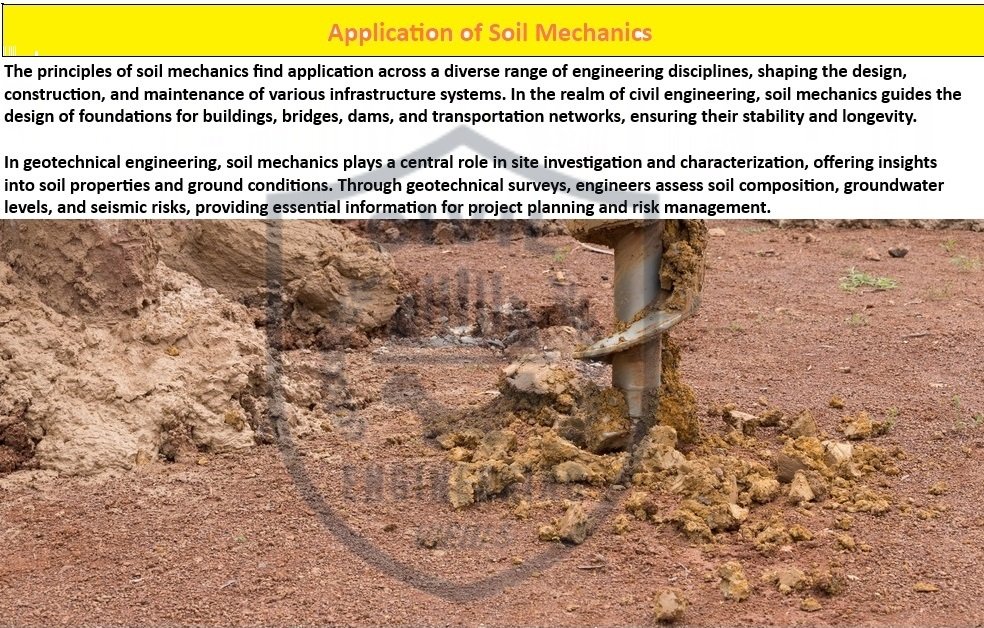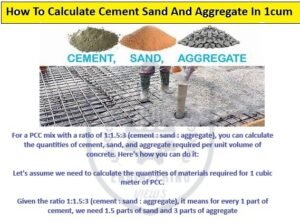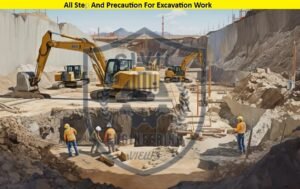Unearthing the Foundations And Exploring the Fundamentals of Soil Mechanics
where the properties of soil dictate the stability of structures, the efficiency of foundations, and the success of engineering endeavors. Soil mechanics, a branch of geotechnical engineering, delves into the behavior of soil under various conditions, offering insights essential for construction projects, infrastructure development, and environmental management. Unearthing the Foundations And Exploring the Fundamentals of Soil Mechanics. Exploring the Fundamentals of Soil Mechanics
Introduction of Soil Mechanics
Beneath our feet lies a world of complexity, where the properties of soil dictate the stability of structures, the efficiency of foundations, and the success of engineering endeavors. Soil mechanics, a branch of geotechnical engineering, delves into the behavior of soil under various conditions, offering insights essential for construction projects, infrastructure development, and environmental management. From analyzing soil composition to predicting settlement patterns, this article embarks on a journey through the fascinating realm of soil mechanics, unraveling its principles, applications, and significance.
Understanding Soil Mechanics
At its essence, soil mechanics investigates the physical, chemical, and mechanical properties of soil and their interactions with applied loads and environmental factors. By studying soil behavior under different loading conditions, engineers can assess its strength, stiffness, permeability, and compressibility, crucial for designing safe and stable structures. Whether it’s designing foundations for skyscrapers, assessing slope stability for infrastructure projects, or mitigating liquefaction risks in earthquake-prone regions, soil mechanics forms the cornerstone of geotechnical engineering. Exploring the Fundamentals of Soil Mechanics

Key Concepts in Soil Mechanics
Several fundamental concepts underpin the study of soil mechanics, each contributing to our understanding of soil behavior and its implications for engineering applications. Soil classification, for instance, categorizes soils based on their grain size, mineral composition, and plasticity characteristics, providing a basis for analyzing their engineering properties and behavior.
Soil compaction, another essential concept, involves the densification of soil particles through mechanical means, enhancing its load-bearing capacity and reducing settlement potential. By compacting soil layers during construction activities, engineers can improve foundation support and mitigate the risks of settlement-induced damage to structures.
Furthermore, soil shear strength plays a critical role in determining the stability of slopes, retaining structures, and excavations. Through laboratory testing and empirical correlations, engineers assess the shear strength parameters of soil, enabling them to analyze stability conditions and design appropriate reinforcement measures.
Applications of Soil Mechanics
The principles of soil mechanics find application across a diverse range of engineering disciplines, shaping the design, construction, and maintenance of various infrastructure systems. In the realm of civil engineering, soil mechanics guides the design of foundations for buildings, bridges, dams, and transportation networks, ensuring their stability and longevity.
In geotechnical engineering, soil mechanics plays a central role in site investigation and characterization, offering insights into soil properties and ground conditions. Through geotechnical surveys, engineers assess soil composition, groundwater levels, and seismic risks, providing essential information for project planning and risk management.
Moreover, soil mechanics informs environmental engineering practices, particularly in the assessment and remediation of contaminated sites. By understanding the transport and fate of pollutants in soil matrices, environmental engineers devise strategies for soil remediation, groundwater protection, and land reclamation, safeguarding human health and ecological integrity.

Challenges and Advances
Despite its significance, soil mechanics presents several challenges, including the inherent variability of soil properties, the complexity of soil-structure interactions, and the uncertainties associated with geotechnical processes. Engineers grapple with issues such as differential settlement, soil liquefaction, and slope instability, necessitating sophisticated analytical tools and predictive models.
Read More
-
How To Calculate The Concrete For Combined Foundation
-
Calculate Load And Design Calculation For Column Beam Wall And Slab
-
How To Find BBS For The Circular Column
In response to these challenges, ongoing research efforts seek to advance our understanding of soil behavior through experimental investigations, numerical modeling, and field monitoring techniques. Advances in remote sensing technologies, such as LiDAR and ground-penetrating radar, enable non-invasive characterization of subsurface conditions, enhancing site assessment and risk mitigation strategies.
Furthermore, the integration of data-driven approaches, including machine learning and artificial intelligence, holds promise for enhancing the predictive capabilities of soil mechanics models and optimizing engineering designs. By leveraging big data analytics and computational algorithms, engineers can analyze vast datasets, identify patterns, and make informed decisions in real-time.
Soil mechanics stands as a cornerstone of geotechnical engineering, providing essential insights into the behavior of soil and its implications for engineering practice. From foundation design to environmental remediation, the principles of soil mechanics permeate various facets of infrastructure development and environmental management.

As we continue to grapple with the challenges of urbanization, climate change, and sustainable development, the importance of soil mechanics only grows more pronounced. By advancing our understanding of soil behavior, embracing innovative technologies, and fostering interdisciplinary collaboration, we can navigate the complexities of soil-structure interactions and pave the way for resilient, sustainable infrastructure systems. In the ever-evolving landscape of engineering, soil mechanics remains an indispensable tool for unearthing the foundations of a safer, more resilient built environment.












[…] Unearthing the Foundations And Exploring the Fundamentals of Soil Mechanics […]